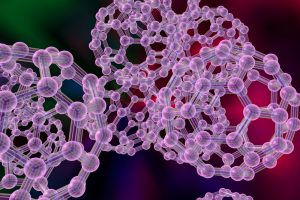Gold nanoparticles and laser light technologies have come together as a result of research by scientists at the University of North Carolina at Chapel Hill. This technology allows physicians the ability to “measure the stickiness of the mucus that lines a patients’ airways.” This technology is a breakthrough for doctors who monitor and treat lung diseases, such as cystic fibrosis or chronic obstructive pulmonary disease (COPD).
Individuals who suffer particular lung diseases have thickened mucus and when that happens it becomes trapped in the lungs and makes it difficult for the patient to breath. Healthy adults have hair-like cell appendages in the throat called cilia that work to pull mucus out of the lungs and into the throat, this also helps to remove any pathogens that could cause a lung infection.
Patients who suffer lung disease such as cystic fibrosis can be prescribed medications that will help thin the mucus, but until this technology was developed, doctors had no failsafe way to monitor whether the mucus was being positively impacted and thinning, especially in other areas of the body other than the throat.
With the gold nanorods, light from a custom laser lens is diffused into a layer of mucus. The diffusion of light from the nanorods allow the doctors to analyze the thickness. The slower the “nanorods are diffused, the thicker the mucus.” Researchers found that using this particular laser imaging method also allowed them to measure the thickness of mucus that was moving over layers of cells; the importance of this is because the “mucus inside a human body is usually in motion.”
Being able to monitor the effectiveness of mucus thinning medications in real time allows the doctors to more quickly change the treatments and tailor them for the specific patient.
The technology is currently not available for use on humans. Even though gold is non-toxic, researchers need to determine that the gold nanorods will eventually “clear a patient’s system” following the completion of the test.
UKA Optics manufactures lenses for diode laser collimators, laser pointers, laser levels, laser surface inspection systems and positioning and measuring equipment.